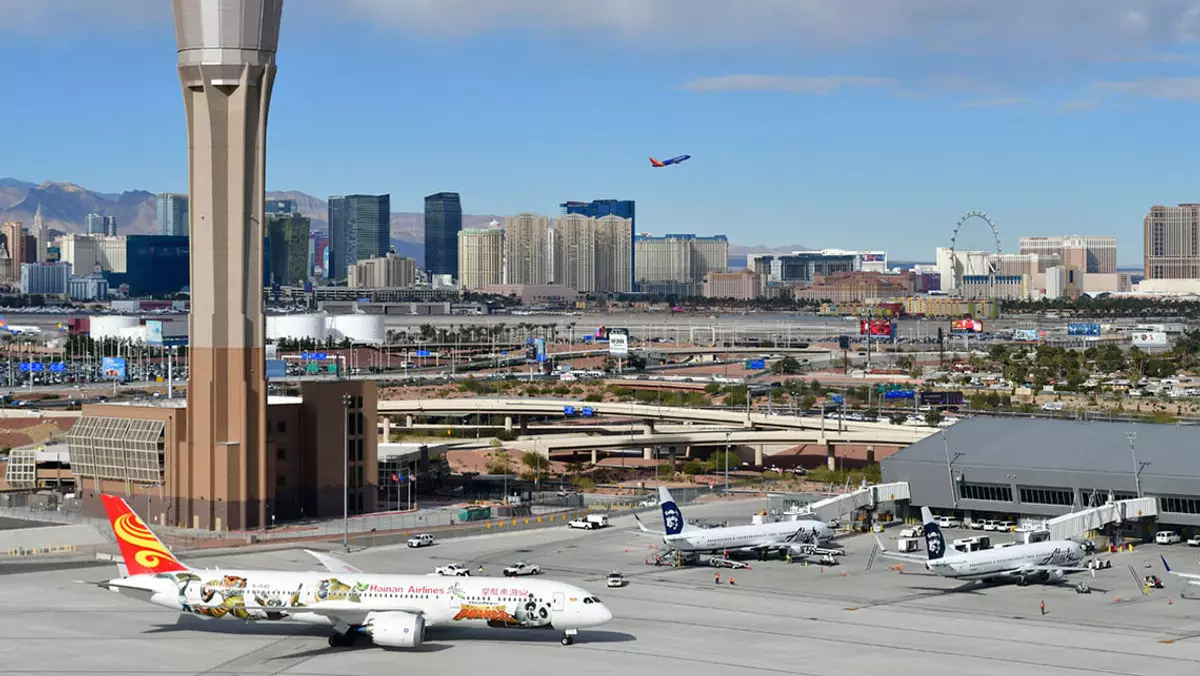The departure of Rosemary Vassiliadis, a transformative figure in Southern Nevada’s aviation landscape, marks a significant turning point for the region’s airport system. Having dedicated nearly three decades—16 of those as director—to elevating the Clark County airport network, her retirement signals both an end of an era and the dawn of new possibilities. Vassiliadis’s legacy is not just defined by her longevity but by her pioneering spirit and innovative leadership that propelled the system onto a global stage. Her influence has laid a formidable foundation for the future, yet her departure opens the door for fresh perspectives and bold initiatives that could redefine the region’s air travel experience.
The appointment of a new director of aviation becomes a critical decision. It’s not merely about filling a vacancy but about selecting a visionary leader capable of embracing change, leveraging technological advancements, and ensuring the airport system remains resilient amid rapid growth. By passing the torch, Vassiliadis leaves behind a system ready to thrive through strategic investments and forward-looking policies, focusing on both expansion and modernization.
Modernization and Expansion: Key to Staying Competitive
The ongoing improvements planned at Harry Reid International Airport exemplify a commitment to modernization that embraces the future of air travel. An ambitious plan to add 26 new gates to Terminal 1 aims to alleviate congestion, improve passenger flow, and enhance overall experience. This expansion isn’t just about increasing capacity but about reimagining terminal design—moving away from outdated satellite gates toward more efficient, user-friendly structures that cater to today’s high-speed travel demands. These enhancements are vital in maintaining Reid Airport’s competitive edge, especially as global rankings continue to reflect its status as a top-tier hub.
Simultaneously, the development of a new reliever airport approximately 30 miles south and west signals proactive planning for future mobility needs. This auxiliary facility, anticipated to open around 2037, will serve as a crucial node to divert congestion, expand available capacity, and support the region’s exploding population and tourism industry. While it’s still early days in its construction timeline, its strategic importance cannot be overstated—ensuring that Southern Nevada remains accessible and competitive on the international stage.
Technology and Innovation: The Cornerstones of a Futuristic Airport System
One of Vassiliadis’s most commendable achievements was positioning Las Vegas as a pioneer in airport innovation. Designated as the nation’s only Innovation Airport by the TSA in 2019, Reid Airport became a testing ground for groundbreaking technologies such as automated screening lanes equipped with computed tomography scanners, UV-C light sanitization systems, and advanced credential authentication units. These innovations not only accelerated passenger processing but also elevated safety and security standards, setting a benchmark that other airports are striving to emulate.
The emphasis on security infrastructure demonstrates a broader commitment to adapting to an evolving threat landscape. The airport’s proactive stance on human trafficking prevention—training staff in victim identification and fostering cooperation with law enforcement—further illustrates a comprehensive approach to safety. Additionally, multilingual signage in restrooms exemplifies a dedication to inclusivity, ensuring that diverse travelers feel welcomed and accommodated.
Looking ahead, the new leadership will need to continue this trajectory by integrating emerging technologies like biometric verification, AI-driven operational management, and sustainable airport solutions. As the aviation industry faces mounting challenges—from environmental concerns to cybersecurity threats—it’s critical that the airport system remains agile and innovative.
Legacy of Leadership and Future Aspirations
Vassiliadis’s career reflects a deep commitment to service, marked by adaptability and resilience during pivotal moments like 9/11 and the pandemic. Her influence helped shape Clark County’s airport system into a model of efficiency, security, and technological innovation. Now, the next chapter must build upon this momentum, redefining what a modern airport can be in a rapidly changing world.
The future of Southern Nevada’s airport system hinges on a delicate balance: expanding capacity and infrastructure while maintaining high standards of security, customer service, and technological advancement. As Vassiliadis rightly noted, the airport remains a key gateway for mega-events, conventions, and tourism—pillars of the region’s economic vitality. Ensuring these facets thrive will depend on clear vision, courageous leadership, and an unwavering commitment to innovation.
The coming years will reveal whether the region’s new leadership can harness these opportunities and navigate the complexities of modern aviation. The foundation is robust, and the possibilities are immense—Southern Nevada stands at a pivotal crossroads with the potential to redefine the future of air travel excellence.


Leave a Reply